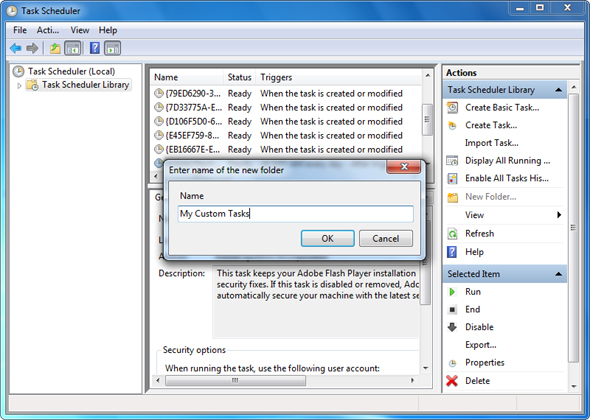Windows Task Scheduler Configuration
Blogging Hub shows how to save time with Task Scheduler
Every day when I turn on my computer, I find myself firing up the same software and reading the same websites. But instead of launching apps manually or typing in the URLs, Windows opens them up automatically. While I'm away from my computer, it also sometimes performs routine maintenance by defragging the disk or scanning for viruses.The tool that turns your docile computer into a caring virtual nanny is the Windows Task Scheduler. All you have to do is make a list of tasks you'd like to automate and configure the Task Scheduler to handle them for you.
Task Scheduler can launch any app that you have installed and gives you extensive options to specify the time intervals when you want these task to run.
Step-by-step: Run tasks automatically
Configure Windows Task Scheduler to carry out the maintenance jobs you might forget
1 Launch Windows Task Scheduler
The easiest way to get to the tool is by typing Task Scheduler into the Start menu search. The main interface gives you an overview of the tool and lists all to active tasks. Before you create you own tasks, right-click on the 'Task Scheduler' library and select the 'New folder' option to create a folder that house all your custom tasks.
2 Create a task
Select the folder you've created and go to 'Action > Create task'. This will open the Create Task dialog box, which helps you define the task. Start by entering the name of the task. It's safe to continue with the default Security options, which run the task as the current logged-in user, but you can also run the task as another user.
3 Set triggers
Now switch to the Triggers tab and click the 'New' button to define the conditions that will trigger you chosen task. You can either start a task at a particular time of the day during particular events, such as the computer booting up. For now, just select 'At log on' from the drop-down list, which will start the task when a user logs in.
4 Specify an action
Head to the Actions tab and click 'New' button to define the action that will take place when the task is triggered. The tool can perform three types of actions. For now, select 'Start a program' from the Action drop-down list and point to an app in the space below, with the name of a website in the optional 'Add arguments' box.
5 Different action, same time
After adding the action in step 4, click the 'New' button and ask the tool to launch another program that you want to run at start-up. I set it to start Excel and my to-do list by pointing to excel.exe in the Setting section, along with the name of the file in the 'Add arguments' box and its location in the 'Start in' box.
6 Defrag disk when idle
Now create a new task that will defrag the hard drive with the Windows Disk Defragmenter whenever you PC is idle. When creating this under the Action tab, point to the app you want to launch (usually C:\Windows\System32\Defrag.exe) then go to the Trigger tab and make sure you select the 'On idle' option when creating the trigger.
7 Set additional conditions
When you select 'On idle', you have to define additional settings that alert the Windows Task Scheduler when the computer is idle. To set these, go to Conditions tab and select one of the preset times from the drop-down list. For laptop users, there's also a checkbox that will ensure this task only runs when the PC is plugged in.
8 Display a message
For a task that runs in the background, it's helpful to create an action that displays a message to alert the user. For our defrag task, create a new action, select the 'Display a message' option from the drop-down list and enter a message describing the event. I also use this feature to display messages reminding me of the day's chores.
9 Control task behaviour
You can further tune the behaviour of a task from the Settings tab. In most cases, the default settings should suffice, but some might need tweaking. For example, if you've set up a virus scan at a particular time and day, and your PC isn't switched on at that time, there's an option here that will run the task the next time the computer is on.
10 Export the task
Once you've set up Windows Task Scheduler , it will improve your Windows experience considerably. I've just scratched the surface and show you how I use it every day. If you have multiple computers with the same programs installed, you can right-click on a task to export it, then import it into a custom folder on another computer.















0 comments for this post
Leave a reply